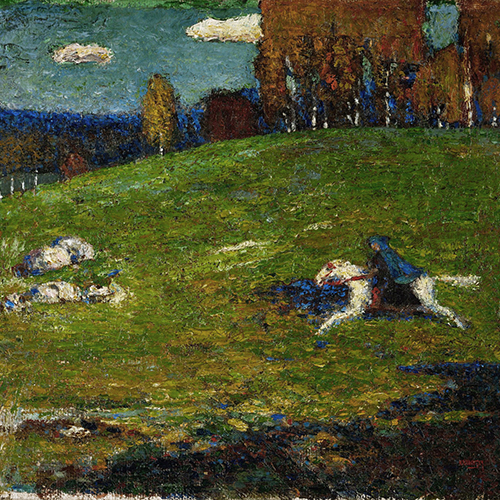
The Blue Rider (Der Blaue Reiter) by Wassily Kandinsky, 1903
Expressionism as an artistic movement developed in the early 20th century, a period in which new and influential explorations of psychology and human behavior were taking place. Artists began to look at the world much more subjectively, often distorting its depictions to achieve an emotional effect. For these creators, personal experiences and feelings became more important than physical reality, and the art inspired by expressionism still holds a power to move and challenge viewers.
Artist and art historian Joseph Paul Cassar traces the movement’s roots, meaning, influences, and its most notable practitioners.
October 4 The Origin and Meaning of Expressionism
Expressionism is distinctive for its strong use of color, distorted figures and natural forms, and intense emotion to explore themes of yearning, anxiety, and alienation. These same elements can be seen in the works of earlier artists, including Matthias Gruenwald, Donatello, Goya, and Van Gogh.
October 11 Die Brücke and the Art of Woodblock Printing
In pre-WWI Dresden and Berlin, a collective known as Die Brücke (The Bridge) practiced a surface style based on luminous, vibrant colors. Its founding members were Fritz Bleyl, Eric Heckle, Ernst Ludwig Kirchner, and Karl Schmidt Rottluff. The group’s artists never renounced the object and figure in their prints and woodcuts influenced by earlier German artists, but instead distorted them into representations of heightened emotions through expressionist techniques.
October 18 Der Blaue Reiter Group
The art of Wassily Kandinsky and his Munich circle known as the Blue Rider group was also color-driven, but he, Alexej von Jawlensky, Franz Marc, and Paul Klee broke completely from representation. Instead of being used to express emotions, color was symbolically orchestrated into abstract forms and rhythms.
October 25 Expressionists and “Degenerate Art”
Works by expressionist painters and sculptors were among the infamous 1937 “Degenerate Art” exhibition, mounted as Nazi propaganda to target modernist art of all kinds. The repercussions shadowed them: Max Beckmann and Paul Klee lost teaching positions and fled from Germany; Otto Dix, also dismissed from his academic post, was drafted into the German army and captured by the French; Ernst Ludwig Kirchner eventually committed suicide.
4 sessions
World Art History Certificate core course: Earn 1 credit*
General Information
*Enrolled participants in the World Art History Certificate Program receive 1 core course credit. Not yet enrolled? Learn about the program, its benefits, and how to register here.